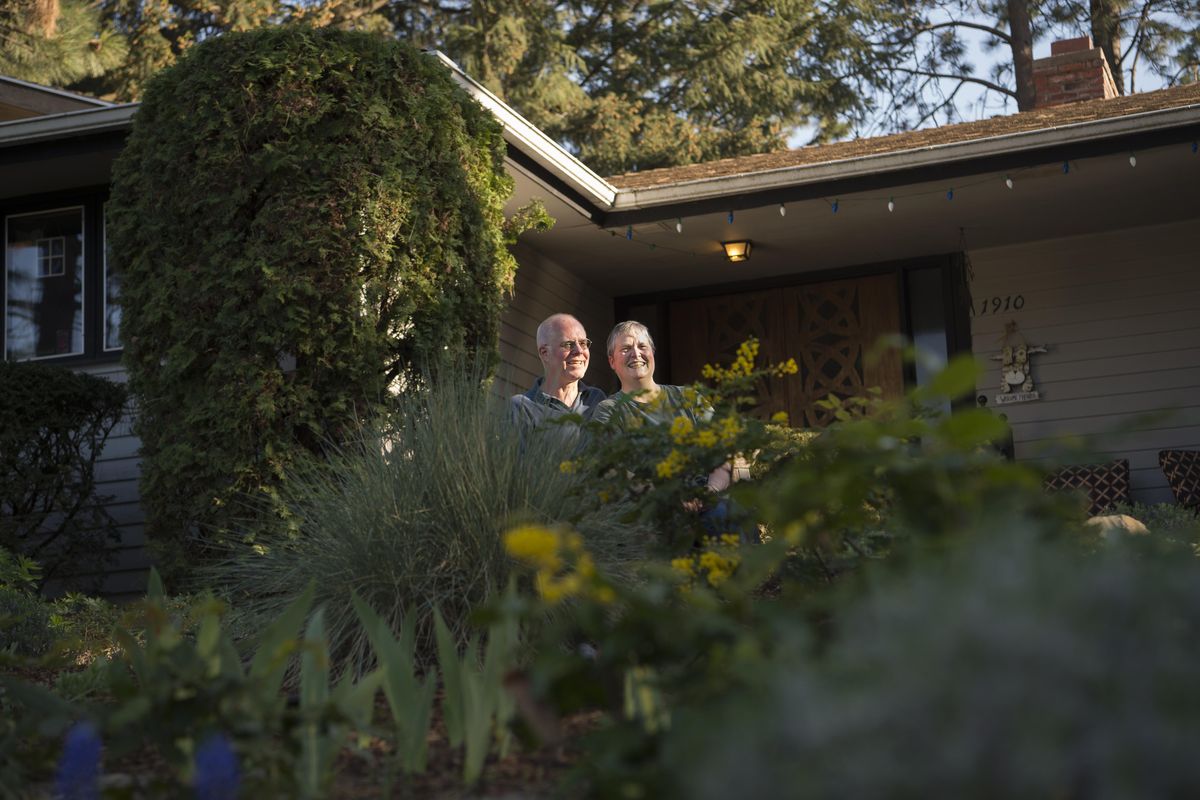In the Garden: Remove or reduce your lawn for easier gardening

Having a lawn is an awful lot of work: They require mowing, watering, fertilizing and keeping on top of those pesky dandelions. Yet we can’t imagine not having a lawn as the foundation for our landscapes. Or can we?
In 2005, Kris Moberg-Hendron decided to remove her front lawn. Her severe allergies to a substance in turfgrass made the decision easy, along with her desire to follow then-Extension agent Tonie Fitzgerald’s advice to replace lawns with native and drought-tolerant plants.
Moberg-Hendron, a Spokane County Master Gardener who holds a bachelor’s degree in agriculture, also had a valid reason for wanting to conserve water: Her husband, Lars Hendron, is the principal wastewater engineer for the city of Spokane. As a result, she is very aware of an important water-use statistic:
“The average lawn requires about 34,000 gallons per season to maintain,” she said. “That is a lot of water, especially when you consider how hot and dry our summers are.”
She also knows that running a lawnmower pollutes our environment in more than one way.
“I have a problem with the noise pollution caused by lawnmowers,” she admitted. “I’d rather hear children playing and laughing, cyclists going by, and be able to talk with my neighbors. You can’t do that over the sound of lawnmowers.”
In addition to her allergies and the amount of water lawns require, she can think of another valid reason to remove one’s lawn: less maintenance.
“We’re all busy so we don’t have time to maintain a yard,” she said. The fewer things we have to do on a weekly basis, the better. And if you replace your lawn with native and drought-tolerant plants, you have minimal maintenance.”
Moberg-Hendron has two main recommendations: completely replace your lawn or reduce the size of it. Let’s look at each of these options.
In her case, she removed her front lawn – “shovelful by shovelful” – over the course of two weeks and terraced the steeply sloped area. She added a layer of compost to add nutrients since much of the topsoil was lost.
Oregon grape, kinnikinnick, prickly-pear cactus, mountain ash and Ponderosa pines are some of the natives she planted. For drought-tolerant plants, she chose Russian sage, lavender, ornamental grasses, irises, cotoneaster, sedum, salvia, burning bush, hens-and-chicks, penstemon and hardy geraniums. A few bulbs, peonies and bleeding hearts add extra color.
Moberg-Hendron uses drip irrigation to water everything and assigned the plantings to different zones based on the amount of water they require. She also deep-waters her shrubs and trees from late September until the first hard freeze so they are well-hydrated going into the winter.
For those interested in going with an alternative lawn that doesn’t need much water, she recommends Dutch white clover, eco lawns (a mixture of drought-tolerant grasses and clovers) or fine fescues. Since fescues have a clumping habit, they are best used on lawns with minimal foot traffic or where children won’t be playing.
She’s a big fan of Dutch white clover because it fixes nitrogen in the soil so it will feed the lawn. It also keeps a lawn looking green in the heat of the summer, when traditional grasses like Kentucky bluegrass die back.
Moberg-Hendron has some wonderful suggestions for reducing the size of your lawn.
“We need to make room in our landscapes for people,” she related. “One way to do this is to add hardscapes – pathways, decks and patios – which invite you out into the landscape.”
Hardscapes located next to a house should be sloped slightly so water drains away from the structure. Typical materials include stone, gravel, bricks, concrete pavers, wood and synthetic decking. Another option is urbanite, which is recycled building materials such as broken concrete.
She encourages enlarging patios so they are more comfortable for entertaining but designing them to require minimal maintenance.
When constructing pathways, they should be 3 to 4 feet wide, to accommodate two people walking together. But Moberg-Hendron likes to go one step further:
“You want a visual treat when you get to the end of the path,” she suggested. “That’s the whole reason we enjoy gardens, right?”
These treats include water features, a single specimen of a spectacular plant, a stunning container, or a bench where you can sit and relax.
Moberg-Hendron’s alternative front yard is catching on in her neighborhood.
“We’ve helped one neighbor take out part of her lawn, put in a flagstone path and add beds of lavender,” she said. “Others have expanded their garden beds and some have added clover to their lawns. I love seeing this happen.”
Susan Mulvihill is co-author, with Pat Munts, of “Northwest Gardener’s Handbook.” Contact her at Susan@susansinthegarden.com and at facebook.com/susansinthegarden.